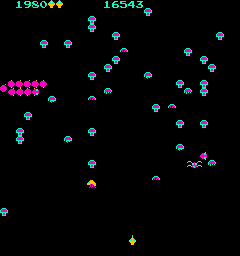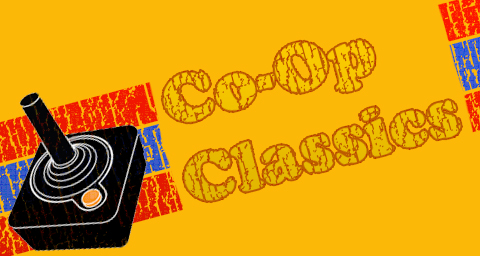For some reason, I've had Atari on my mind quite a bit lately. Perhaps it's the influence of Xbox Live Arcade's Game Room; perhaps it's seeing classic Atari games packed into Taco Bell kid's meals. It seems there is a resurgence in the popularity of the hallowed Atari 2600, specifically. Just the other day one of my students was wearing a T-Shirt emblazoned with the iconic Atari joystick. It's unfortunate that most of the old school Atari games were single player experiences, and don't get much coverage here at Co-Optimus. But there is one obscure Atari game that will be of particular interest to fans of co-op gameplay.
Atari first rose to prominence as a pioneer in the video game industry. Their first arcade game was Pong, in 1972, and it became a huge commercial success. It was followed by a slew of clones and variants (and I'm certain that a 2 player versus 2 computer-controlled opponent variant of Pong was the first true co-op video game). Atari entered the console business in 1975 with a home version of Pong, and two years later, the cartridge-based Video Computer System, later known as the 2600, was released. Innovations in controls andgameplay led to Atari classics like Breakout, Asteroids, and Football, the first Atari game using a trackball. The trackball was used to perhaps its greatest effect in 1980. That year, two timeless trackball games hit the arcade: Missile Command and Centipede.


Most games in the early Golden Age of the arcade were military or space-based in nature. Missile Command was a blend of the two genres. The player controlled three batteries of missiles, and used them to defend a six cities from incoming enemy fire. Graphically sparse, even compared to other games of the time, Missile Command was a bleak, often-frustrating experience. Missile trails littered the screen, ever advancing to the cities below, and often the player had to make a choice as to which city to save and which to abandon to a horrible thermonuclear fate. There was no worse feeling than running out of shots before a level was over, and watching helplessly as inbound missiles wreaked havoc on your populace, followed by an explosive THE END covering the screen. Powerful stuff, especially given the Cold War political climate of the time.
In contrast to Missile Command's hopeless fatalism, Centipede was a colorful, fanciful abstract. The player controlled a strangely shaped, head-like object that shot magic bullets. The playing field was strewn with random patches of mushrooms, and the titular centipede crawled down from the top of the screen, weaving in and out of the mushroom mazes. Other creepy crawlies like spiders, fleas, and scorpions appeared, each making life difficult for you in its own creepy way. Advancing to a new level changed the color scheme of the game dramatically, often contrasting vividly in a mesmeric manner. Legend has it that Centipede was the first real hit with female video gamers, which might be due to the fact that it was co-designed by one of the few women working in the industry. Centipede was extremely popular, and is often mentioned as one of the greatest games of all time.
